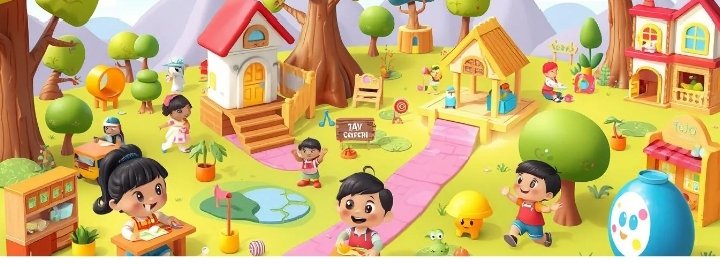Literotica Tags: A Complete Guide
Introduction
Literotica, one of the most popular online platforms for erotic literature, provides a vast collection of user-generated stories, poems, and serialized content. To help readers navigate the expansive library of content, the platform uses literotica tags—keywords that categorize stories based on their themes, kinks, and genres.
In this comprehensive guide, we will explore what Literotica tags are, their significance, the most popular tags, how authors use them effectively, and tips for readers to find their desired content with ease.
Also best article fintechzoom-io-comprehensive-guide-digital-finance
What Are Literotica Tags?
Literotica tags function as metadata, helping users filter stories based on specific elements. These tags classify stories by genre, content themes, character relationships, and sexual preferences. They enable both readers and writers to organize and discover relevant content efficiently.
For instance, if a reader enjoys BDSM-themed stories, searching for the BDSM tag will direct them to a collection of stories that fit this category.
Importance of Literotica Tags
1. Enhancing Discoverability
Tags make it easier for readers to find stories that align with their preferences. Without tags, users would have to browse through an overwhelming number of stories to locate the ones that match their interests.
2. Helping Writers Reach the Right Audience
Authors who properly tag their stories increase their chances of attracting readers who enjoy their style and themes.
3. Filtering Out Unwanted Content
Some readers may want to avoid certain themes or kinks. Tags allow users to bypass stories that include topics they are not comfortable with.
4. Organizing Content Efficiently
Literotica tags create a structured library, making navigation smoother for both newcomers and long-time readers.
Popular Literotica Tags and Their Meanings
Below is a breakdown of some of the most popular tags used in Literotica and what they signify:
1. Genre-Based Tags
These tags classify stories based on their overarching genre:
- Romance – Stories that focus on love and relationships with emotional depth.
- Sci-Fi & Fantasy – Erotic tales set in futuristic or mythical worlds.
- Horror – Stories that combine fear with sensuality.
- Mystery & Suspense – Erotic narratives with an element of mystery or thrill.
- Historical – Stories set in past eras with period-appropriate settings and themes.
2. Relationship-Based Tags
These tags categorize stories based on the relationships between characters:
- Cheating – Stories involving extramarital affairs or infidelity.
- Incest – Content featuring sexual relationships between family members (often restricted on many platforms).
- Lesbian/Gay – Stories centered on same-sex relationships.
- Group Sex – Narratives featuring multiple participants in sexual activities.
- Cuckold – Stories where one partner watches or is aware of their partner engaging in sex with another person.
3. Kink and Fetish Tags

These tags help readers find content that includes specific sexual kinks:
- Voyeurism – Stories involving watching others engage in sexual acts.
- Exhibitionism – Characters engaging in sexual activities in public or semi-public settings.
- Taboo – Content that explores unconventional or socially forbidden fantasies.
- Age Play – Stories where characters engage in roleplay involving age differences.
4. Story Structure Tags
These tags indicate the type of storytelling technique used:
- Series – Multi-chapter stories that continue over time.
- One-Shot – Standalone stories that do not continue beyond a single chapter.
- POV (Point of View) – Stories told from a first-person perspective.
- In2. Bookmark Favorite Tagsteractive – Readers can influence the story through comments or choices.
How Writers Can Use Literotica Tags Effectively
For writers, selecting the right tags is crucial in reaching the intended audience. Here are some best practices:
1. Be Accurate and Honest
Avoid misleading tags, as this may lead to negative feedback or loss of reader trust.
2. Use a Broad and Specific Tags
A combination of general (e.g., Romance) and niche (e.g., BDSM) tags helps reach a wider audience while still targeting specific readers.
3. Keep Tags Relevant
Only use tags that are directly related to the content to avoid confusion and maintain clarity.
4. Limit the Number of Tags
While multiple tags can be useful, over-tagging might make a story appear cluttered or confusing.
How Readers Can Utilize Literotica Tags for Better Navigation
1. Use Search Filters
Readers can combine multiple tags to refine their search results and find stories that match their exact preferences.
Most platforms allow users to bookmark or follow specific tags for quick access.
3. Read Descriptions Along with Tags
Tags provide a broad idea, but the story description gives a better understanding of the content.
4. Check Related Tags
Exploring related or suggested tags can lead to the discovery of new content that aligns with one’s interests.
The Evolution of Literotica Tags
Literotica tags continue to evolve based on reader preferences and societal changes. Some older terms may become outdated, while new ones emerge as storytelling styles shift.
For example, the rise of non-binary and gender-fluid characters has led to more inclusive tags reflecting diverse identities and relationships.
Conclusion
Literotica tags play a vital role in categorizing and organizing erotic literature, making it easier for both readers and writers to navigate the vast collection of stories available. By understanding these tags and using them effectively, readers can discover stories tailored to their tastes, and writers can reach their target audience more efficiently.
Whether you’re a reader searching for your next favorite erotic story or a writer looking to connect with an audience, mastering the art of Literotica tagging will enhance your experience in the world of erotic fiction.







Your article helped me a lot, is there any more related content? Thanks! https://accounts.binance.info/en-IN/register?ref=UM6SMJM3